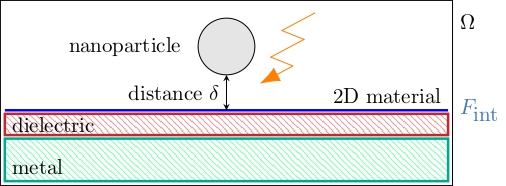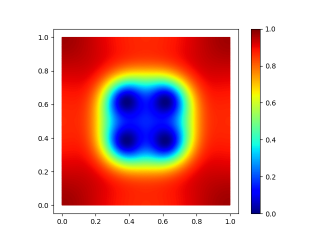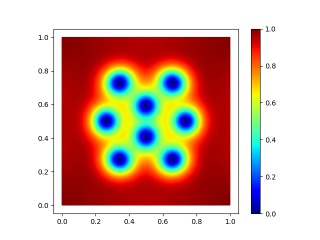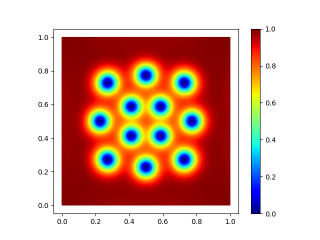Numerical methods for nonlinear optics
The junior research group Numerical methods for nonlinear optics is led by Benjamin Dörich and is funded by the collaborative research center Wave Phenomena. Our research focuses on the numerical treatment of electromagnetic waves, described by Maxwell equations, interacting with a 2d materials such as for example Graphene. The research group is represented in the collaborative research center by the project B10 Numerical methods for nonlinear optics in plasmonic nanogaps.
Sekretariat
Raum 3.002 (3. OG)
Öffnungszeiten (in der Regel)
| Mo, Mi, Do | 09 - 12 Uhr |
| Mo, Mi, Do | 13 - 16 Uhr |
Bei dringenden Anliegen bitten wir Sie, vorab per E-Mail Kontakt mit uns aufzunehmen.
Kontakt
| Telefon | +49 721 608-42061 |
| Fax | +49 721 608-43767 |
| na-sek∂math.kit.edu |
| Name | Tel. | |
|---|---|---|
| Dr. rer. nat. Dörich, Benjamin | +49 721 608-46680 | benjamin doerich ∂does-not-exist.kit edu |
| Dörner, Julian, M. Sc. | +49 721 608-43766 | julian doerner ∂does-not-exist.kit edu |
| Titel | Links | Dozent*innen | Typ |
|---|---|---|---|
| Wintersemester 2025/26 | |||
| Finite Element Methods | Hochbruck, Dörich | Vorlesung (V) | |
| Tutorial for 0110300 (Finite Element Methods) | Hochbruck, Dörich | Übung (Ü) | |
| Sommersemester 2025 | |||
| Einführung in das Wissenschaftliche Rechnen | Hochbruck, Dörich | Vorlesung (V) | |
| Praktikum zu 0165000 (Einführung in das Wissenschaftliche Rechnen) | Hochbruck, Dörich | Praktikum (P) | |
| Wintersemester 2024/25 | |||
| Seminar (Spezielle Themen der Numerik) | Hochbruck, Dörich | Seminar (S) | |
Numerical methods for nonlinear optics in plasmonic nanogaps
Here, we study (nonlinear) Maxwell equations on a 3d domain which interacts with a 2d materials, such as Graphene and transition-metal dichalcogenides (TMDC). The interaction takes place on the interface $F_{int}$ via an interface jump in the tangential component of the magnetic field \mathbf{H} coming from a surface current. For the current can either be modelled via response theory or as a current derived from a magnetic Schrödinger equation. Because of its interdisciplinary aspects, this project will be conducted together with the Theoretical Optics & Photonics group of K. Busch at HU Berlin.

Numerical methods for the Ginzburg-Landau equation
Superconductors are materials that allow to conduct electricity without any electrical resistance. The superconductivity in Ω can be modeled by a complex-valued wave function , which is called the order parameter. The physical quantity of interest is
, which denotes the density of the superconducting electron pairs. Together with the magnetic vector potential\(
\), the order parameter can be characterized as a minimizer of the Ginzburg–Landau energy
where is the applied magnetic field. The size of the parameter
is crucial for the appearance of vortices. The so-called high-
regime is the physically most interesting regime, but numerically it is also the most challenging one because it requires fine meshes to resolve all lattice structures. In our research we want to understand how we have to discretize this problem in order to capture the correct vortex patterns.



Numerical methods for nonlinear wave equations
In this part, we study the time, space and full discretization of various nonlinear wave(-type) equations. These nonlinear effects pose severe challenges in the well-posedness of the problem as well as in the error analysis. Our overall goal is o construct and analyze reliable numerical methods via an interplay of the strategies from the wellposedness result and the restrictions (and advantages) from the finite dimensional subspace.
